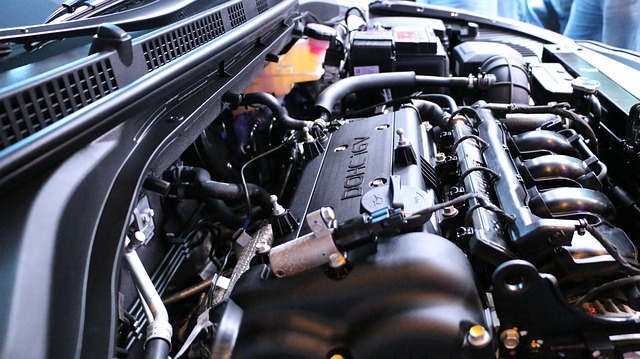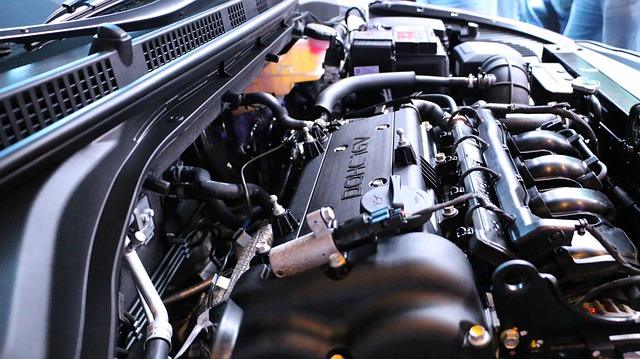Looking to register your car in California? This comprehensive guide breaks down the process step-by-step. From understanding crucial requirements to navigating VIN verification, you’ll learn everything needed for a seamless registration experience. Gather essential documents, follow verified steps for VIN checking, and choose between online or in-person methods. Once complete, finalize ownership and hit the road legally!
- Understand California Car Registration Requirements
- Gather Necessary Documents for Vehicle Registration
- Perform VIN Verification: Steps and Importance
- Choose a Suitable Registration Method: Online or In-Person
- Pay Registration Fees and Finalize Your Vehicle's Ownership
Understand California Car Registration Requirements

Before registering your car in California, it’s crucial to understand the state’s specific requirements for vehicle registration. One key aspect is ensuring that the Vehicle Identification Number (VIN) on your vehicle matches the one listed in official records. This process, known as VIN verification, is a critical step in the registration procedure. California requires this verification to prevent fraud and ensure the accuracy of vehicle information.
During the registration process, you’ll need to undergo a VIN inspection to confirm the vehicle’s identity. If you’re considering a used car purchase, opt for a mobile VIN inspection service to save time and hassle. These services can perform a quick and accurate VIN verification right at your location, making it easier to navigate California’s car registration regulations.
Gather Necessary Documents for Vehicle Registration

Before you start the registration process, make sure you have all the required documents ready. In California, you’ll need to provide proof of ownership, typically through a vehicle’s Certificate of Title or a bill of sale. It’s also crucial to have your Vehicle Identification Number (VIN) verified. This can be done using a mobile vin verifier for a quick and convenient inspection or by visiting a certified service center for a formal vin inspection.
Additionally, you’ll require valid identification documents such as a driver’s license or state-issued ID card, proof of insurance, and possibly other forms depending on your specific circumstances. Ensuring that all these documents are in order will streamline the registration process and help avoid any delays or complications down the line.
Perform VIN Verification: Steps and Importance

Before you can register your car in California, it’s crucial to perform a VIN (Vehicle Identification Number) verification. This process involves checking the vehicle’s history and ensuring its authenticity. Start by obtaining your car’s VIN, typically found on the vehicle’s registration certificate or the driver’s side of the dashboard. Then, use a trusted mobile vin verifier or conduct a vin inspection yourself to access detailed information about the car’s past, including ownership records, accident history, and outstanding loans.
The importance of this step cannot be overstated. A proper VIN verification ensures you’re making an informed decision when purchasing a used car. It protects against buying a stolen vehicle, hidden damage, or vehicles with manipulated odometers. By completing this requirement, you’ll have peace of mind knowing that your California car registration process is off to a transparent and secure start.
Choose a Suitable Registration Method: Online or In-Person

When registering your car in California, one of the initial steps involves deciding between an online or in-person registration method. Both options have their advantages and are equally legitimate. Online registration offers convenience by allowing you to complete the process from the comfort of your home, with just a few clicks. It involves submitting necessary documents and details, including your Vehicle Identification Number (VIN) for verification purposes. This step ensures that your car is genuine and helps speed up the registration process.
On the other hand, visiting a California Department of Motor Vehicles (DMV) office for in-person registration provides an opportunity for immediate feedback and assistance. Some individuals prefer this method due to the chance to speak with a representative who can guide them through the process. Additionally, mobile VIN verification services are available, offering a convenient alternative where a professional inspects your vehicle’s VIN using advanced technology, ensuring accuracy and saving you a trip to the DMV.
Pay Registration Fees and Finalize Your Vehicle's Ownership

After completing your vehicle’s purchase, the next step in California is to pay the registration fees and finalize the ownership transfer. This process involves several key steps. First, you’ll need to verify the Vehicle Identification Number (VIN) of your car. You can do this through a mobile VIN verification service or by scheduling a VIN inspection at a designated location. This critical step ensures that your vehicle’s history is accurately recorded.
Once the VIN verification is complete, you can proceed with paying the registration fees. These fees vary based on factors like the type of vehicle and its age, so be sure to check the California Department of Motor Vehicles (DMV) website for up-to-date rates. After payment, you’ll receive a registration certificate and other necessary documents that confirm your ownership.
Registering a car in California involves understanding key requirements, gathering essential documents, and completing necessary steps like VIN verification. By following this guide, from verifying your vehicle’s unique identifier (VIN) to choosing between online or in-person registration, you can ensure a smooth process. Remember, accurate documentation and compliance with state regulations are crucial for a successful car registration in California.
